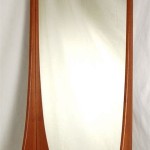How to Use Screen Mirroring on Your Hisense Smart TV with a Computer
Screen mirroring, also known as screen casting, is a technology that allows users to wirelessly display the content from their computer screen onto a larger display, such as a Hisense Smart TV. This functionality is particularly useful for presentations, watching videos, sharing photos, and even gaming on a bigger screen. This article outlines the process of setting up and using screen mirroring from a computer to a Hisense Smart TV, covering various methods and troubleshooting tips.
Understanding Screen Mirroring Technology
Screen mirroring works by establishing a wireless connection between the computer and the Hisense Smart TV. This connection typically utilizes Wi-Fi Direct or a similar wireless protocol. The computer sends a stream of data, including images and audio, to the TV, which then displays the content in real-time. The specific technology used for screen mirroring can vary depending on the operating system of the computer and the features supported by the Hisense Smart TV.
Several common protocols facilitate screen mirroring. Miracast is a widely adopted standard that allows devices to connect directly without needing a Wi-Fi network. Chromecast, developed by Google, is another popular option, although it typically requires a Wi-Fi network connection and involves casting specific applications rather than mirroring the entire screen. Apple's AirPlay is designed primarily for Apple devices and offers seamless integration with Apple TVs and some smart TVs that support AirPlay. Hisense Smart TVs generally support Miracast and may support other protocols as well.
Prerequisites for Screen Mirroring
Before attempting to mirror a computer screen to a Hisense Smart TV, ensure that the following prerequisites are met:
Compatibility: Confirm that both the computer and the Hisense Smart TV support screen mirroring technology. Most modern Hisense Smart TVs include Miracast functionality, but it is advisable to check the TV’s specifications. For computers, the operating system must support screen mirroring. Windows 10 and later versions have built-in Miracast support, while older versions may require additional software or hardware. macOS requires AirPlay-compatible devices or third-party applications to mirror to non-Apple devices.
Network Connection: Although Miracast allows direct connections, having both devices connected to the same Wi-Fi network is often beneficial for stability and performance. Ensure that the Wi-Fi network is stable and provides sufficient bandwidth for streaming video content. For Chromecast, a Wi-Fi network is mandatory.
Software and Drivers: Ensure that the computer has the latest graphics drivers installed. Outdated drivers can cause compatibility issues and prevent screen mirroring from working correctly. Check the device manager on Windows or the system preferences on macOS to update drivers.
Hisense Smart TV Settings: On the Hisense Smart TV, verify that screen mirroring is enabled in the settings menu. The specific location of this setting may vary depending on the TV model and the operating system (e.g., VIDAA, Android TV). Look for options such as "Screen Mirroring," "Anyview Cast," or "Wireless Display."
Steps to Mirror a Computer Screen to a Hisense Smart TV
The following steps outline the general process of mirroring a computer screen to a Hisense Smart TV. The exact steps may vary slightly depending on the operating system of the computer and the TV model.
For Windows 10 and Later
Step 1: Enable Screen Mirroring on the Hisense Smart TV: Navigate to the settings menu on the Hisense Smart TV and enable screen mirroring. This usually involves selecting an option like "Screen Mirroring," "Anyview Cast," or "Wireless Display." The TV may display instructions on the screen to guide the connection process.
Step 2: Connect the Computer to the TV: On the Windows 10 computer, press the Windows key + P to open the Project menu. Alternatively, click on the Notifications icon in the taskbar (located in the bottom right corner of the screen) and select "Connect."
Step 3: Select the Hisense Smart TV: The computer will search for available wireless displays. Select the Hisense Smart TV from the list of available devices. If the TV is not listed, ensure that it is turned on and that screen mirroring is enabled.
Step 4: Confirm the Connection: The TV may display a prompt asking for permission to connect. Accept the connection request on the TV. The computer screen should now be mirrored on the Hisense Smart TV. The Project menu on Windows allows choosing different display modes, such as "Duplicate" (to mirror the screen), "Extend" (to use the TV as a second monitor), "Second screen only" (to display only on the TV), and "PC screen only" (to revert to the computer screen).
For macOS
Mirroring a macOS computer to a Hisense Smart TV requires either an AirPlay-compatible TV or a third-party application. If the Hisense Smart TV supports AirPlay, the process is straightforward:
Step 1: Check AirPlay Compatibility: Verify that the Hisense Smart TV supports AirPlay 2. Not all models support AirPlay. Check the TV's specifications or consult the user manual.
Step 2: Enable AirPlay on the TV: Navigate to the settings menu on the Hisense Smart TV and enable AirPlay. Ensure that the TV is connected to the same Wi-Fi network as the macOS computer.
Step 3: Connect the Computer to the TV: On the macOS computer, click on the Control Center icon in the menu bar (located in the top right corner of the screen). Select "Screen Mirroring" and choose the Hisense Smart TV from the list of available devices.
Step 4: Enter the AirPlay Code (if prompted): The TV may display an AirPlay code. Enter this code on the macOS computer to complete the connection. The computer screen should now be mirrored on the Hisense Smart TV.
If the Hisense Smart TV does not support AirPlay, alternative solutions are available:
Third-Party Applications: Several third-party applications allow mirroring a macOS screen to non-AirPlay devices. Popular options include AirBeamTV, Reflector, and LetsView. These applications typically require installing software on both the computer and the TV (or on a streaming device connected to the TV).
Using Chromecast: If the user has a Chromecast device connected to the Hisense Smart TV, it is possible to cast the macOS screen using the Google Chrome browser. Install the Google Cast extension in Chrome and then select "Cast..." from the Chrome menu. Choose the Chromecast device connected to the Hisense Smart TV to mirror the screen.
Troubleshooting Screen Mirroring Issues
Screen mirroring can sometimes be unreliable. Here are some common issues and troubleshooting steps:
Connection Problems: If the computer cannot find the Hisense Smart TV, ensure that both devices are connected to the same Wi-Fi network (if applicable) and that screen mirroring is enabled on the TV. Restart both the computer and the TV.
Performance Issues: Lagging or stuttering video can be caused by a weak Wi-Fi signal or insufficient bandwidth. Move the devices closer to the Wi-Fi router or try using a wired Ethernet connection for the computer or the TV. Close unnecessary applications on the computer to free up resources.
Driver Issues: Outdated or incompatible graphics drivers can cause screen mirroring to fail. Update the graphics drivers on the computer to the latest version. Check the device manager on Windows or the system preferences on macOS to update drivers.
Firewall Issues: Firewalls can block the connection between the computer and the TV. Temporarily disable the firewall on the computer to see if this resolves the issue. If so, configure the firewall to allow connections from the Hisense Smart TV.
HDCP Issues: High-bandwidth Digital Content Protection (HDCP) is a copy protection technology that can sometimes interfere with screen mirroring. Ensure that all devices in the chain (computer, TV, cables) support HDCP. Try using a different HDMI cable or disabling HDCP in the TV’s settings (if available).
Firmware Updates: Ensure that the Hisense Smart TV has the latest firmware installed. Firmware updates often include bug fixes and performance improvements that can resolve screen mirroring issues. Check the TV’s settings menu for firmware update options.
Resolutions and Aspect Ratios: Mismatched resolutions or aspect ratios can cause display problems. Adjust the display settings on the computer to match the resolution and aspect ratio of the Hisense Smart TV. This can usually be found in the display settings of the operating system.
Background Applications: Close any unused applications running in the background on the computer. These applications might be consuming resources that could be used to improve the performance of the screen mirroring process.
Interference: Wireless interference from other devices can disrupt the screen mirroring connection. Keep the computer and the TV away from other electronic devices that may cause interference, such as microwave ovens or cordless phones.
Alternative Methods for Displaying Content
In addition to screen mirroring, there are other ways to display content from a computer on a Hisense Smart TV:
HDMI Connection: The simplest and most reliable method is to connect the computer to the TV using an HDMI cable. This provides a direct connection with no wireless interference. The TV will act as an external monitor for the computer.
USB Drive: Copy the content (videos, photos, documents) to a USB drive and then plug the USB drive into the Hisense Smart TV. Use the TV’s media player to access and display the content.
DLNA: Digital Living Network Alliance (DLNA) allows sharing media files between devices on the same network. Configure a DLNA server on the computer and then use the TV’s media player to access the shared files.
Cloud Storage: Upload the content to a cloud storage service (e.g., Google Drive, Dropbox) and then access the content on the Hisense Smart TV using the TV’s web browser or a dedicated app for the cloud storage service.
By following these steps and troubleshooting tips, users can successfully mirror their computer screen to a Hisense Smart TV and enjoy a larger display for various applications and multimedia content. Choosing the right method depends on individual needs, technical proficiency, and the specific features supported by the devices.

Hisense Tv Screen Mirroring A Full Guide Airdroid

How To Mirror Windows 11 Laptop Pc Screen Hisense Vidaa Tv Wired Wirelessly

Hisense Tv Screen Mirroring For Iphone Ipad Free App
Screen Mirroring Hisense Tv Apps On Google Play

Hisense U6hf Screen Mirroring Setup Wirelessly Connect Phone To Tv

Connect Hisense Tv To Apple Mac Wireless Screen Mirror App

A Complete Guide To Screen Mirroring Hisense Tv Flashget Cast

A Complete Guide To Screen Mirroring Hisense Tv Flashget Cast

Easy Ways To Connect Hisense Tv Your Phone With Pictures

How To Connect Mirror Laptop Screen On Any Smart Tv Wirelessly No App








